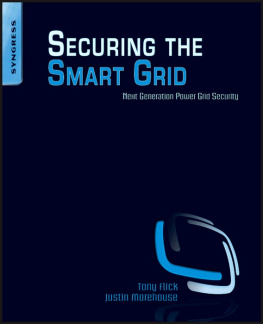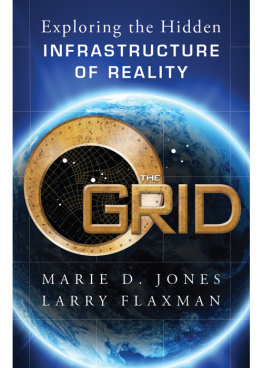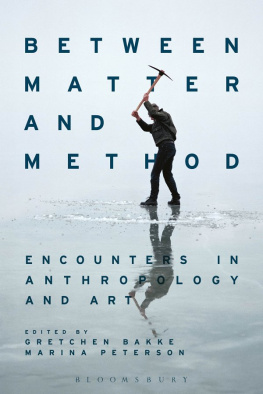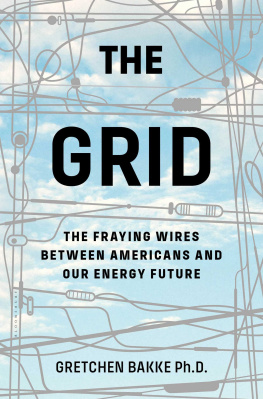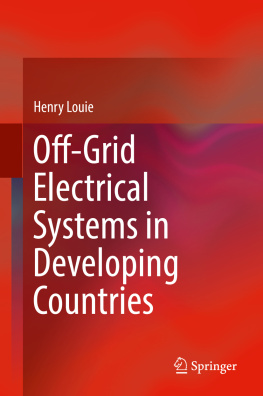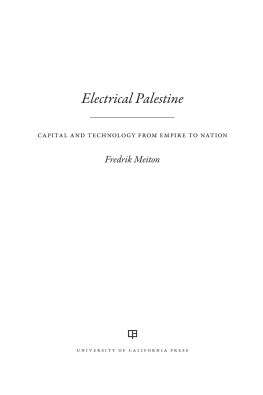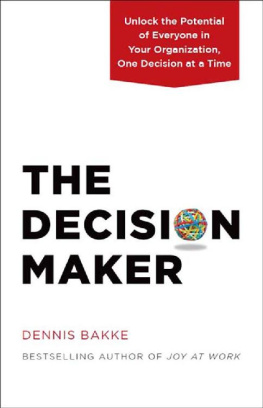Gretchen Bakke - The Grid: Electrical Infrastructure for a New Era
Here you can read online Gretchen Bakke - The Grid: Electrical Infrastructure for a New Era full text of the book (entire story) in english for free. Download pdf and epub, get meaning, cover and reviews about this ebook. year: 2016, genre: Romance novel. Description of the work, (preface) as well as reviews are available. Best literature library LitArk.com created for fans of good reading and offers a wide selection of genres:
Romance novel
Science fiction
Adventure
Detective
Science
History
Home and family
Prose
Art
Politics
Computer
Non-fiction
Religion
Business
Children
Humor
Choose a favorite category and find really read worthwhile books. Enjoy immersion in the world of imagination, feel the emotions of the characters or learn something new for yourself, make an fascinating discovery.

- Book:The Grid: Electrical Infrastructure for a New Era
- Author:
- Genre:
- Year:2016
- Rating:5 / 5
- Favourites:Add to favourites
- Your mark:
- 100
- 1
- 2
- 3
- 4
- 5
The Grid: Electrical Infrastructure for a New Era: summary, description and annotation
We offer to read an annotation, description, summary or preface (depends on what the author of the book "The Grid: Electrical Infrastructure for a New Era" wrote himself). If you haven't found the necessary information about the book — write in the comments, we will try to find it.
The Grid: Electrical Infrastructure for a New Era — read online for free the complete book (whole text) full work
Below is the text of the book, divided by pages. System saving the place of the last page read, allows you to conveniently read the book "The Grid: Electrical Infrastructure for a New Era" online for free, without having to search again every time where you left off. Put a bookmark, and you can go to the page where you finished reading at any time.
Font size:
Interval:
Bookmark:
To Guillaume, for whom books are written.

Any sufficiently advanced technology is indistinguishable from magic.
ARTHUR C. CLARKE
Right now theres three power companies in New York City: there is ConEd in Manhattan, there is the Brooklyn power company Brooklyn Union Gas up in Brooklyn, and there is a windmill here on 519 East Eleventh Street.
INTERVIEW FROM THE 1978 FILM VIVA LOISAIDA
Energy is a hot-button issue these days. From the marble halls of state to Louisianas once-battered and besmeared coastline, we as a nation keep hearing about the need to make the transition to green, clean, sustainable energy. Doing so, we are told, will help put our jobless back to work, contribute to Americas triumphant reemergence on the world stage, and quite possibly save the planet. At the very least, it will spare us from the oil spills, rig explosions, fracking quakes, and mining disasters that come without warning and destroy without compunction. So, too, we hope that more sustainable forms of power might help guarantee us a future with fewer superstorms and snowpocalypses, rising tides and shrinking ice caps. The stakes for changing how we make and use energy have never been higher.
Transitioning to sustainability is the big, long-term challenge. But left out of this picture is the fact that for the most part, America does not run on gas, oil, or coal any more than we may one day run on wind, solar, or tidal power. America runs on electricity. The age of information has remade the ways we communicate, socialize, and even learn things into electricity-dependent processes. And though we tend to think of this shift in terms of computerization, the computer is only the tool. Electricity is what makes it work. As computers become ever more essential to how we live, travel, and care for ourselves, so, too, have electric appliances brought us bright, functional homes and workplaces. Our health and our hospitals are intensely dependent upon electric power, as are our factories, ports, police, and military. Even money these days is electrically made and stored data that we sometimes convert into pieces of paper and the jingle of coins. Some of us even smoke electric cigarettes, and its looking likely that soon well be shuttling about in self-driving electric cars. Electricity has become so essential that using the word blackout to refer to a power outage is something of a misnomer. Losing light is the least of our problems when our electricity system now crashes to ground, which its doing with increasing frequency.
Our energy sources might be the main cause of our worrycoal with its carbon emissions, natural gas with its methane emissions and questionable extraction methods, nuclear with its poisoned waste, and even oil with its cost in wartime bloodbut they are not all that matters to the story of American power. The rest of the tale begins at the precise moment these fuels go up in flames. We dont use them raw. And while lots of oil still goes into cars, almost all the others are used to power the grida complex and expansive electrical delivery system that we care little for and think even less about.
Though it is situated squarely at the center of our modern lives, for most Americans the grid rarely breaches consciousness. A couple of years ago I was shown a snapshot a friend had taken of a sunset, its dusky pinks and evening grays bisected straight through by power lines; it even had a couple of utility poles smack-dab in the middle of the frame. Look, she said, what a beautiful sunset. The grid was right there and it didnt even disturb the view. Its the worlds largest machine and the twentieth centurys greatest engineering achievement and we are remarkably oblivious to it. Experts at unseeing its wires and poles, we are equally unlikely to be able to differentiate a power station from an oil refinery. Substations, essential to our grid, flit perhaps at the edges of recognition, though most have been well hidden behind cement walls or stuck in out-of-the-way corners of our cities and towns. Transformers, once a world-altering technology, have also been rendered utterly unspectacular, secreted inside gray canisters that cluster like coconuts at the tops of urban utility poles. Even our smart phones, which also form a part of the grid, albeit one that can be disaggregated and carried around in a pocket, dont seem properly infrastructural. Yet open one up and what you will see is, in effect, some circuit boards carefully wrapped around the mass of a battery. Its power source is its heart, and this is only fed by a constant return to the grid.
As such, the grid would seem to best Frankenstein in the heterogeneity of its parts, to outdo the Eisenhower Interstate System in its geographic scope, and to dwarf space exploration in the complexity of its science. It also reveals a bizarrely accurate picture of this nation in the particularities of its historical unfolding. The grid is not just something we built, but something that grew with America, changed as our values changed, and gained its form as we developed as a nation. It is a machine, an infrastructure, a cultural artifact, a set of business practices, and an ecology. Its tendrils touch us all.
Literally speaking, our grid is comprised of the battery, its port, the charger, its plug, the outlet and its wall-hidden wires out to the street, the transformer and the familiar forest of urban utility poles, the low-voltage wires that run along these poles out to the substation, more transformers (bigger here), some syncrophasers, relays, switches, and fuses and the giant pylons that march away across the empty parts of America carrying high-voltage wires to the power plant, where it all begins in an electromagnetic generator spun fast by a steam-heated, or wind-blown, or water-wheeled, or gas-combusted turbine. Our grid is a peculiarly pervasive infrastructure that touches every life, pierces every wall, bifurcates every landscape, and runs every battery.
And though we call it the grid, in America we actually have three of them: one for the West that includes a tiny bit of Mexico and much of western Canada; one for all of the East; and a separate, smaller one for Texas. For the most part Mexico has its own grid, but Canada does not (except for its errant province, Quebec, which, like Texas, has chosen to keep its options for secession open by managing its infrastructure for itself).
Looking at its sleek lines and high towers, one might mistake the grid for an electrical transportation superhighway. But to those intimately acquainted with it, another image springs to mindthat of an old, beat-up, pothole-riddled, one-lane dirt road. The grid is worn down, its patched up, and every hoped-for improvement is expensive and bureaucratically bemired.
More than 70 percent of the grids transmission lines and transformers are twenty-five years old; add nine years to that and you have the average age of an American power plant. According to the industry expert Peter Asmus, we rely on twice as many power plants as we actually need because of the massive inefficiencies built into this system. As a result, significant power outages are climbing year by year, from 15 in 2001 to 78 in 2007 to 307 in 2011. America has the highest number of outage minutes of any developed nationcoming in at about six hours per year, not including blackouts caused by extreme weather or other acts of God, of which there were 679 between 2003 and 2012. Compare this with Korea at 16 outage minutes a year, Italy at 51 minutes, Germany at 15, and Japan at 11. Not only do we have more outages than most other industrial countries, but ours are getting longer. The average U.S. power outage is 120 minutes and growing, while in the rest of the industrialized world its less than ten minutes and shrinking. According to Massoud Amin, a power systems engineer, on any given day in the U.S. about half a million people are without power for two or more hours.
Next pageFont size:
Interval:
Bookmark:
Similar books «The Grid: Electrical Infrastructure for a New Era»
Look at similar books to The Grid: Electrical Infrastructure for a New Era. We have selected literature similar in name and meaning in the hope of providing readers with more options to find new, interesting, not yet read works.
Discussion, reviews of the book The Grid: Electrical Infrastructure for a New Era and just readers' own opinions. Leave your comments, write what you think about the work, its meaning or the main characters. Specify what exactly you liked and what you didn't like, and why you think so.



